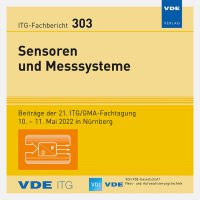Absolute optical spectroscopy for determining the degree of cross-linking of plastics
Conference: Sensoren und Messsysteme - 21. ITG/GMA-Fachtagung
05/10/2022 - 05/11/2022 at Nürnberg
Proceedings: ITG-Fb. 303: Sensoren und Messsysteme
Pages: 7Language: englishTyp: PDF
Authors:
Halmen, Norbert; Mittelberg, Linda; Baudrit, Benjamin; Hochrein, Thomas; Bastian, Martin (SKZ – German Plastics Center, Würzburg, Germany)
Bergmann, Florian; Reitzle, Dominik; Happ, Claudia Scalfi; Kienle, Alwin (ILM – Institut für Lasertechnologien in der Medizin und Meßtechnik an der Universität Ulm, Ulm, Germany)
Abstract:
Cross-linking is a cost-effective method to improve the thermal, chemical and mechanical material properties of thermoplastics and expand their range of application. Cross-linked polyethylene (PE-X), used for water pipes or surgical implants, is a well-known example. In addition, thermosets, which are important in the context of the energy revolution and e-mobility, cure by cross-linking. The degree of cross-linking or curing of these materials has a major impact on various material properties and thus needs to be controlled. To date, only destructive and time-consuming laboratory tests are used to determine this crucial parameter. Accordingly, there is a great demand for fast, non-destructive testing, which can be carried out during the process or on the finished product. Absolute optical spectroscopy, where absorption and scattering coefficients of a sample can be determined separately, offers a promising approach to solve this problem. In the research work presented here a demonstrator based on an integrating sphere was used to investigate various PE-X materials and different thermoset resins. Wet chemical analysis, differential scanning calorimetry (DSC) as well as dielectric analysis (DEA) served as references. The results show that different PE-X materials can be well distinguished by their absorption and scattering in the visual (VIS) and near-infrared (NIR) wavelength range, respectively. Moreover, conclusions on their degree of cross-linking are possible. Similarly, the curing of the resins can be monitored based on the absorption. The assembled integrating sphere demonstrator is suitable for non-destructive determination of the degree of cross-linking or curing and has the potential for use as an at-line device for in-process quality assurance.


